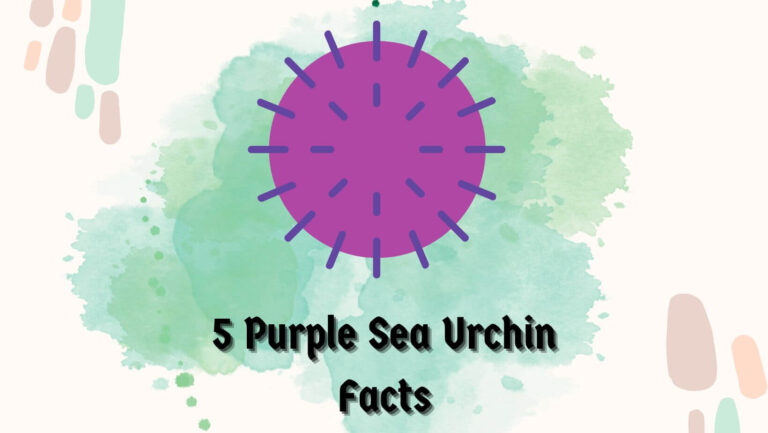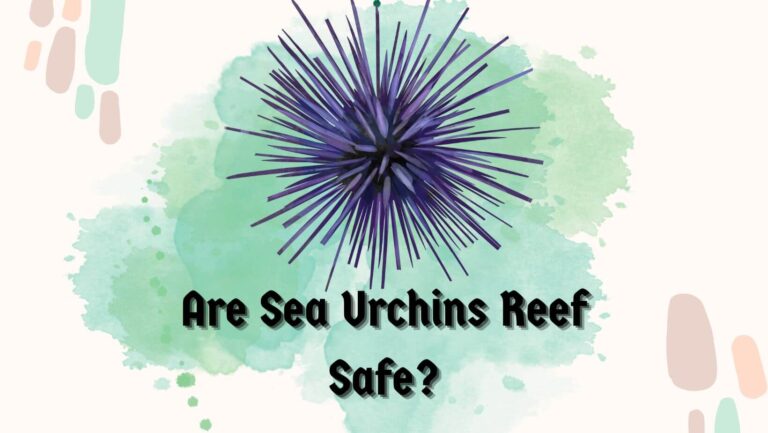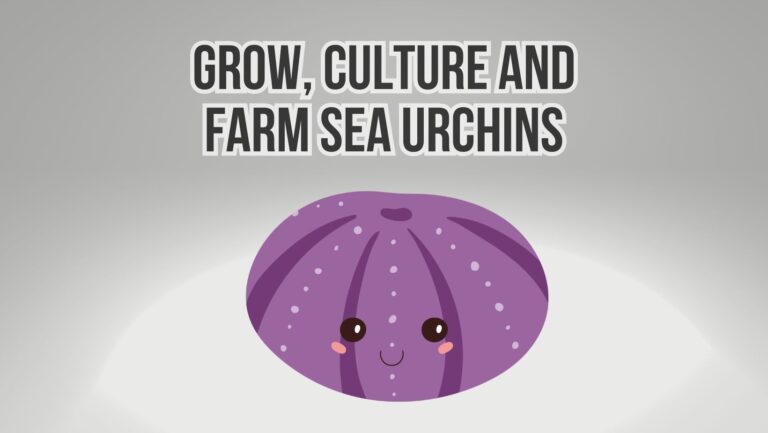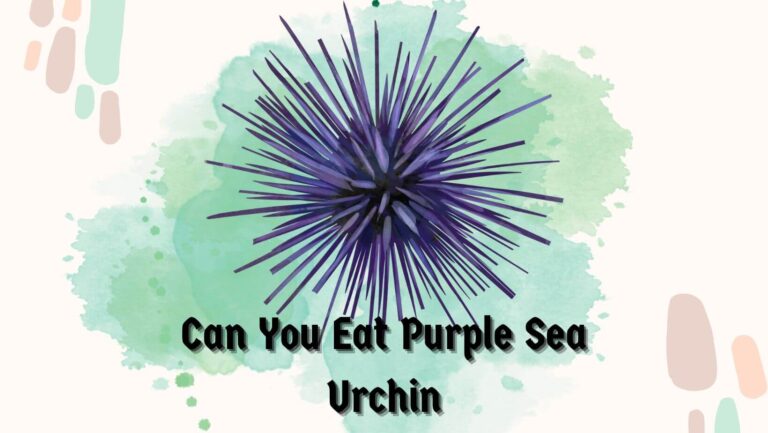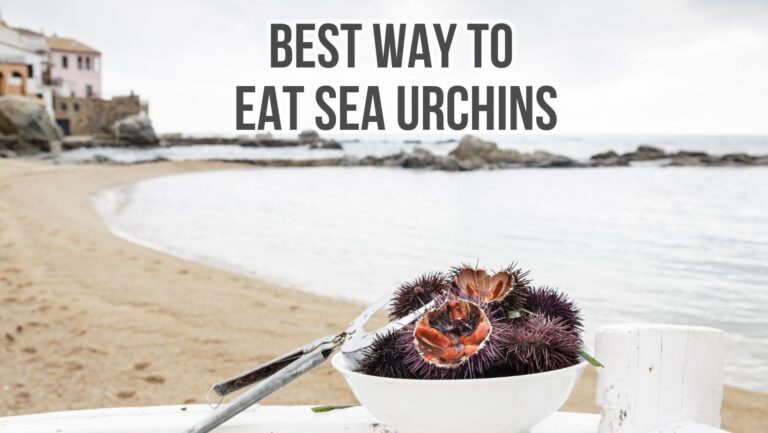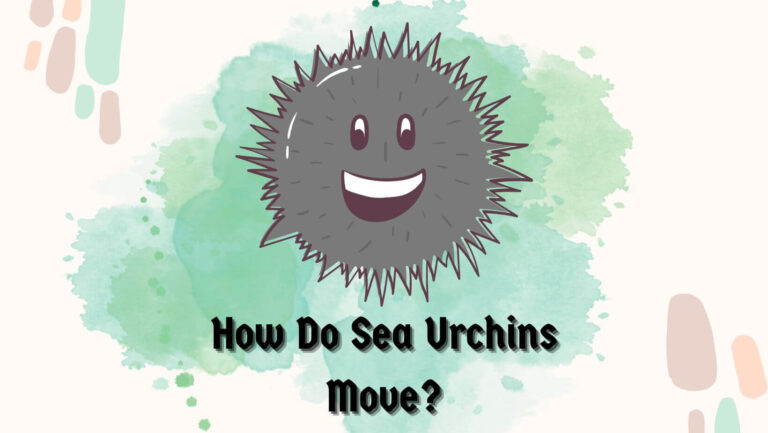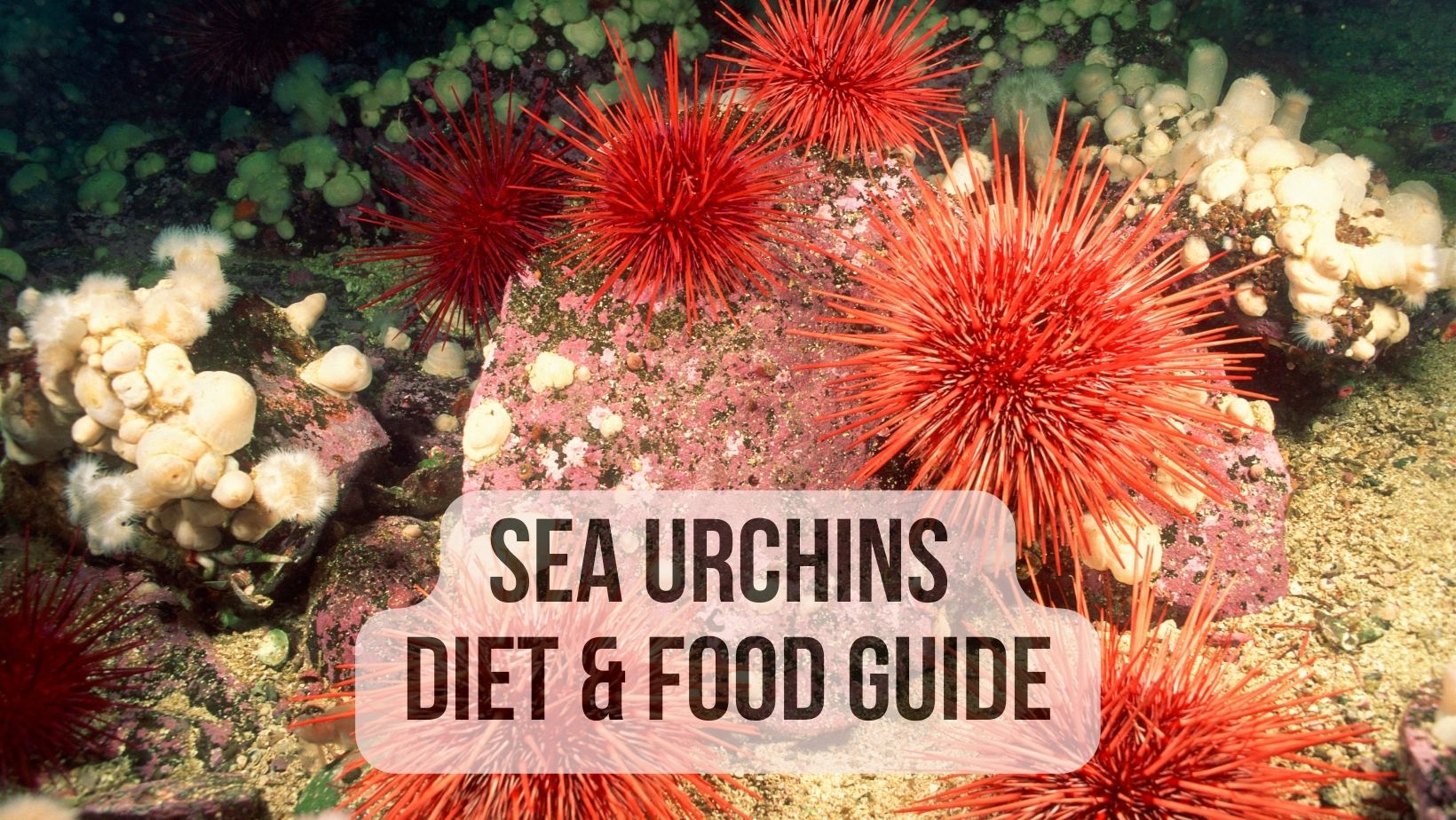
What Do Sea Urchins Feed On? Sea urchins have a diverse diet consisting of various food sources. They are known to consume algae that grow on rocks, as well as plankton, kelp, periwinkles, and occasionally even barnacles and mussels.
While sea urchins are primarily herbivorous, there are indeed some species that exhibit opportunistic feeding behaviors and consume a broader range of food sources, including animal matter. Here is a revised explanation of their diet:
Sea urchins are generally herbivorous, feeding on algae and other plant materials. However, some species do exhibit omnivorous tendencies and consume a wider variety of food sources. These opportunistic feeders may include barnacles, small crustaceans, mollusks, and even dead fish or decaying organic matter. It’s important to note that not all sea urchin species exhibit these feeding behaviors, and the extent of omnivory can vary among individuals and populations.
10 Items Sea urchins Eat
Let’s take a closer look at each of these food sources:
- Algae: Sea urchins are herbivores and feed on different types of algae. They use their specialized mouthparts, known as Aristotle’s lantern, to scrape and graze algae off rocks. Algae provide sea urchins with essential nutrients, including carbohydrates, proteins, vitamins, and minerals.
- Plankton: Sea urchins are filter feeders and can consume plankton, which are tiny organisms suspended in the water. Plankton can include both phytoplankton (microscopic plants) and zooplankton (small animals). Filter-feeding sea urchins use their tube feet and spines to capture plankton from the water column.
- Kelp: Some sea urchin species, such as the purple sea urchin, have a particular affinity for kelp. They feed on the blades of kelp, using their mouthparts to scrape off and consume the plant material. Kelp provides sea urchins with a rich source of nutrients, including carbohydrates, proteins, and various vitamins.
- Periwinkles: Sea urchins have been observed feeding on periwinkles, which are small marine snails. They can use their spines and tube feet to grasp and consume periwinkles. While periwinkles may not form a significant portion of their diet, sea urchins may opportunistically feed on them if available.
- Seagrass: Some sea urchin species feed on seagrass, which is an important component of coastal ecosystems. Seagrass provides essential nutrients, such as carbohydrates, proteins, and vitamins. It also serves as a habitat for various marine organisms. While seagrass is a beneficial food source, excessive consumption by sea urchins can lead to the destruction of seagrass beds, which negatively affects other marine species.
- Detritus: Sea urchins are known to consume detritus, which consists of decaying organic matter in the ocean. While detritus may not provide substantial nutritional value, it does contain microorganisms and bacteria that sea urchins can digest. Detritus serves as an additional food source when other preferred foods are scarce. However, relying solely on detritus can result in malnutrition and weakened immune systems in sea urchins.
- Barnacles and Mussels: In some cases, sea urchins have been observed consuming barnacles and mussels. They can use their mouthparts to scrape and grind away the shells of these sessile marine organisms to access the soft tissues inside. However, it is important to note that this behavior may not be typical for all sea urchin species or individuals.
- Jellyfish: While sea urchins are not known for actively seeking out jellyfish as prey, they may opportunistically consume jellyfish that have been injured or are in close proximity. This behavior is more likely to occur when other food sources are scarce.
- Dead Fish and Decaying Matter: Sea urchins can occasionally scavenge on dead fish or other decaying organic matter present in their environment. They may use their mouthparts to graze on the soft tissues and consume the nutrients released during decomposition. However, it’s important to note that this behavior is not a primary or regular part of their diet.
What eats sea urchins? Sea Urchins Predators
Sea urchins have a few natural predators that feed on them as part of their diet. Some of the main predators of sea urchins include:
- Sea Otters: Sea otters are known to feed on sea urchins as a primary food source. They use their dexterous paws to pry open the sea urchin’s protective spines and consume the soft inner tissue. Sea otters play a vital role in controlling sea urchin populations and maintaining the balance of kelp forests.
- Marine Birds: Certain species of marine birds, such as seagulls and cormorants, are known to feed on sea urchins. These birds have sharp beaks that they use to crack open the sea urchin’s hard outer shell and access the edible parts inside.
- Fish: Some species of fish, including triggerfish, pufferfish, and wrasses, prey on sea urchins. These fish have specialized jaws and teeth adapted to crush the sea urchin’s shell and consume the inner tissue.
- Crabs and Lobsters: Predatory crustaceans, such as certain species of crabs and lobsters, can feed on sea urchins. They use their strong claws to break open the sea urchin’s shell and access the nutritious parts inside.
- Marine Mammals: Other marine mammals, such as seals and certain species of whales, may also feed on sea urchins opportunistically. While sea urchins may not form a significant part of their diet, they can be consumed when other food sources are scarce.
It is important to note that the presence and impact of these predators on sea urchin populations can vary depending on the specific ecosystem and geographical location. Predation plays a crucial role in regulating sea urchin populations and maintaining the health of marine ecosystems. However, changes in predator populations or environmental conditions can sometimes lead to imbalances, such as overpopulation of sea urchins or excessive grazing on kelp forests.
Foods to Avoid Feeding Sea Urchins
When it comes to feeding sea urchins, there are certain foods that should be avoided to ensure their health and well-being. Here is a list of foods that should not be fed to sea urchins:
- Processed Foods: Sea urchins have specific dietary requirements and are best suited for consuming natural, unprocessed foods. Processed foods, such as bread, crackers, or processed fish flakes, lack the necessary nutrients and can lead to digestive issues or nutritional deficiencies in sea urchins. It is crucial to provide them with fresh, natural food sources.
- Artificial Additives: Sea urchins should not be fed foods that contain artificial additives, such as preservatives, colorants, or flavor enhancers. These additives can be harmful to sea urchins and may disrupt their digestive system or overall health. It is important to provide them with clean, additive-free food sources.
- Human Leftovers: Leftovers from human meals should not be fed to sea urchins. Human food may contain seasonings, spices, oils, or other ingredients that are not suitable for sea urchins’ digestive systems. Additionally, the leftovers may be contaminated or contain substances that can be toxic to them.
- Toxic or Poisonous Marine Plants: It is crucial to avoid feeding sea urchins with toxic or poisonous marine plants. Some marine plants may contain harmful substances or toxins that can be lethal to sea urchins. It is essential to research and identify safe and suitable plant species before offering them as food.
Feeding sea urchins a proper and suitable diet is important for their health and vitality. It is recommended to consult with experts, such as marine biologists or aquarists, who have experience in caring for sea urchins, to ensure they receive an appropriate and balanced diet. By providing them with the right foods, we can support their overall well-being and contribute to the preservation of these fascinating creatures in the marine environment.
What do captive sea urchins eat?
Captive sea urchins are typically provided with a diet that closely resembles their natural food sources. The specific diet may vary depending on the species of sea urchin and the availability of suitable food options. Here are some commonly fed foods for captive sea urchins:
- Algae: Algae, such as nori (dried seaweed), are a staple food for captive sea urchins. Nori sheets can be offered directly to sea urchins or secured to a feeding clip inside the aquarium. Other types of macroalgae, such as sea lettuce (Ulva spp.) or kelp, may also be provided, depending on availability and suitability for the specific sea urchin species.
- Commercial Sea Urchin Food: There are commercially available sea urchin diets formulated specifically for captive sea urchins. These diets are often in powdered or pellet form and contain a balanced blend of nutrients to meet the dietary needs of sea urchins. They usually consist of a mixture of algae, proteins, vitamins, and minerals.
- Frozen or Fresh Plant Material: Some sea urchins may accept frozen or fresh plant material as part of their diet. This can include various types of seaweed, lettuce, spinach, or other suitable greens. It is important to ensure that the plant material is thoroughly washed and free from any contaminants or pesticides.
- Live or Frozen Marine Plankton: Some species of captive sea urchins can benefit from the inclusion of live or frozen marine plankton in their diet. These can include phytoplankton or zooplankton, such as rotifers, copepods, or brine shrimp. These planktonic organisms provide additional nutrients and can be a valuable food source, particularly for juvenile sea urchins.
Related FAQ’S to sea urchins Diet
Sea urchins have a diverse diet that can vary depending on the species and their specific ecological niche. Let’s address each of the questions you’ve asked:
Do Sea Urchins Eat Phytoplankton?
Yes, sea urchins can consume phytoplankton. Phytoplankton refers to microscopic plant-like organisms that float in the water column. While sea urchins primarily graze on algae and plant material, some species may also feed on phytoplankton when it is available.
Do Sea Urchins Eat Sea Cucumbers?
No, sea urchins do not typically eat sea cucumbers. Sea cucumbers belong to a different group of echinoderms and have different feeding habits and diets.
Can Sea Urchins Eat Fish?
Sea urchins are herbivores and primarily feed on algae, kelp, and other plant material. They do not consume fish as part of their natural diet.
Can Sea Urchins Eat Shrimps?
Sea urchins do not typically consume shrimps. They are herbivorous and mainly feed on plant material, including algae and kelp.
Can Sea Urchins Eat Clams?
Sea urchins are not known to consume clams. They have specialized mouthparts adapted for grazing on algae and plant material rather than breaking open hard-shelled organisms like clams.
Can Sea Urchins Eat Corals?
Certain species of sea urchins, such as the rock-boring sea urchins (Echinometra spp.), can graze on and damage corals. However, the vast majority of sea urchin species do not consume corals as part of their diet.
Can Sea Urchins Eat Seaweed?
Yes, sea urchins are known to feed on seaweed. Seaweed, including various types of algae and kelp, forms a significant part of their diet in their natural habitats.
Can Sea Urchins Eat Other Urchins?
Some species of sea urchins are known to feed on other sea urchins. For example, the green sea urchin (Strongylocentrotus droebachiensis) has been observed engaging in intraspecific predation, consuming conspecifics or closely related species.
Can Sea Urchins Eat Diatoms?
Diatoms are a type of phytoplankton, and sea urchins can consume them as part of their diet. Diatoms are microscopic algae encased in a silica shell, and sea urchins have adaptations to feed on such small particles.
Summary
Sea urchins play a vital role in maintaining the balance of marine ecosystems through their feeding habits. By consuming algae, kelp, plankton, and other food sources, they help regulate populations and control the growth of certain organisms. However, it is essential to note that overgrazing by sea urchins can have detrimental effects on marine habitats, such as the depletion of kelp forests. Therefore, maintaining a balanced ecosystem is crucial to ensure the well-being of both sea urchins and their surrounding marine environment.

